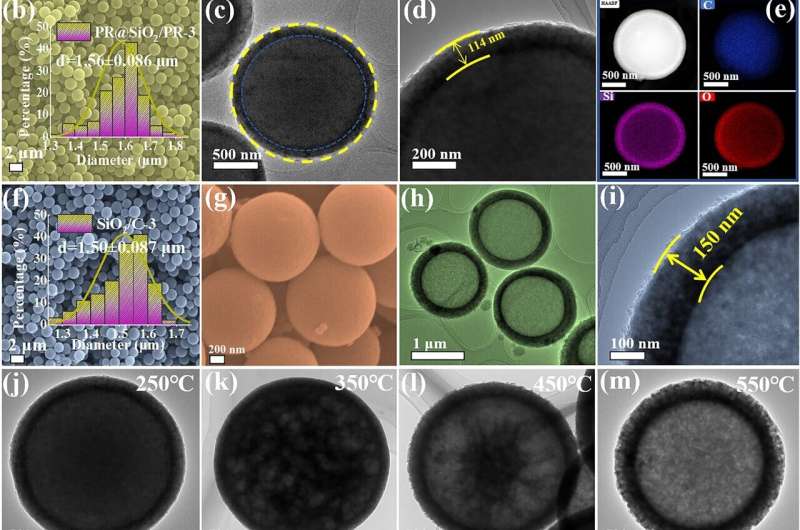This article has been reviewed according to Science X's editorial process and policies. Editors have highlighted the following attributes while ensuring the content's credibility:
fact-checked
proofread
Silicon carbide/carbon microspheres maintain performance in harsh environments

With the rapid development of electronic information technology, electromagnetic wave absorption materials play a crucial role in military applications such as electromagnetic protection and stealth devices, as well as in the defense industry.
However, considering that current electromagnetic absorption materials, whether for military stealth or civilian electronic purposes, are often applied outdoors, uncontrollable factors such as geographical location and weather conditions have a negative impact on the stability of electromagnetic responses. Exploring electromagnetic absorption materials that combine excellent microwave absorption performance with environmental stability is therefore crucial for practical applications.
Numerous studies have shown that carbon and silicon carbide demonstrate stable wave absorption performance in some extreme environments. However, both materials exhibit significant deficiencies in terms of absorption intensity and bandwidth.
Although some improvement in microwave absorption performance compared to single-component materials can be achieved through simple composites, it still fails to meet the current demand for high-performance absorption materials. Therefore, the in-depth development of carbon/silicon carbide composites for electromagnetic protection is of great significance.
To address this issue, the team led by Yun-Chen Du from Harbin Institute of Technology constructed composite microspheres with a core-shell structure using phenolic resin microspheres and silica as the core and shell layers, respectively. During the high-temperature pyrolysis process, spontaneous formation of a hollow structure occurred due to interface reactions, which not only facilitates lightweight requirements but also significantly enhances the attenuation ability of incident electromagnetic waves.
The paper is published in the journal Nano-Micro Letters.
By controlling the thickness of the silica shell layer, Du's team achieved compositional regulation of hollow silicon carbide/carbon (SiC/C) composite microspheres, thereby controlling the electromagnetic properties of the composite material. The research results from Du's team demonstrate that, under the synergistic effect of composition and structure, SiC/C composite materials exhibit outstanding wave absorption performance, with the strongest reflection loss and widest effective absorption bandwidth reaching -60.8 dB and 5.1 GHz, respectively. These results surpass those of most previously reported SiC/C composite materials.
Furthermore, Du also confirmed through radar cross-section simulation data the excellent radar stealth performance of SiC/C composite materials. Treatment of the composite material with different temperatures and acidic or alkaline environments did not cause significant changes in its wave absorption performance.
The effective absorption bandwidth and reflection loss intensity values remained stable after treatment, indicating the promising practical application prospects of hollow SiC/C microspheres in various harsh natural environments.
More information: Lixue Gai et al, Compositional and Hollow Engineering of Silicon Carbide/Carbon Microspheres as High-Performance Microwave Absorbing Materials with Good Environmental Tolerance, Nano-Micro Letters (2024). DOI: 10.1007/s40820-024-01369-6
Provided by Shanghai Jiao Tong University Journal Center





















